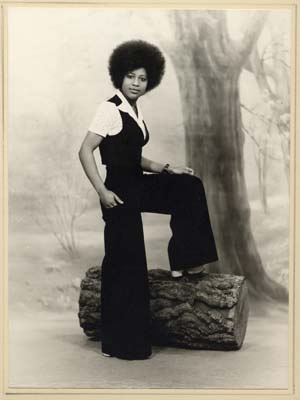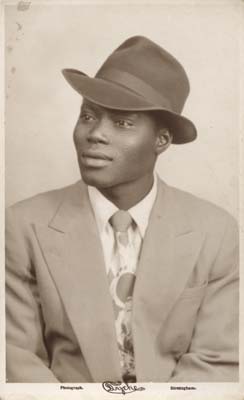Understanding and looking for clues as to the date of undated archival materials can be tough, however, in the case of the Dyche photographic collection, of which I am fully immersed in cataloguing for the next year, there are a few signs that can point towards an approximate date of a photograph. The first of these clues to look for is the type of photograph you are looking at; photo development types and methods changed dramatically over time from the early methods of the 1830s to the fast development colour prints we have now. The types of prints are indictive of their time and will help identify the period in which the photo was taken.
For more modern photographs, black and white or colour photography will also help narrow down the time period in which the photo was taken. While colour photography was discovered in the mid-1800s, it only gained popularity in the 1960s as before this it was considered much too expensive for most people to buy and even too expensive for the average photographer at the time. Using this information, we can deduce that most colour developed images were taken in the 1960s or later, however a lot of photos are still seen in black and white or sepia colours even into the 1970s.
As previously mentioned, a method I have been applying frequently whilst cataloguing the Dyche collection is using changing fashion trends in order to date a photograph, often to a ten-year period. Fashion changes dramatically overtime and this is something that can certainly be seen within the Dyche collection with so many portrait images of individuals and families, and even with wedding photos, it is easy to see the changing trends of fashion and hairstyles. For example, with the image to the left of a lady wearing a jumpsuit with her foot on a log, it is easy to date this outfit to the 1970s due to the wide leg jumpsuit paired with the choice of an open collar shirt. Both fashion choices are indicative of the 1970’s. We can make out that the shoes she has chosen are platforms from the foot raised on the log. Platform shoes were popular in both the 1960s and the 1970s but have a larger stronger association with the 1970s and so I would be confident to date this image in the 1970s due to all this information.
Men’s fashion trends can be a little trickier to pin down to a particular decade, especially in portrait images such as those in the Dyche collection, as men would often wear their best suits to get the pictures taken. Therefore, we must look at the changes in suit style along with accessory choices. A good example here is the image to the right of a man in a suit with printed tie and wide brimmed fedora. Hats are an excellent indication of fashion trends and the wide brimmed fedora in particular became a popular choice for men in the 1950s. This date can also be backed up by the choice of a bold wide neck tie, also popular in the 1950s and a trend which changed dramatically in the 1960s with the introduction of a much skinner tie. These bits of evidence all point towards this image being taken within the 1950s.
Using simple deductive clues such as these to date images can help give people more understanding of the time in which the images were taken. The potential benefits of approximating a date on these images is the reason we attempt to put a date to an image. This work could narrow down the search for a family member’s images within the collection, or provide further insight to the life of the people in Birmingham at the time for a researcher. There are many more benefits to retrospectively dating a photograph for archival use and these are just a couple of examples to show you how this work is done in order to aid in any research you might undertake at the archive.
These images are part of the Dyche Collection [MS 2912] in The Library of Birmingham. This work is being undertaken as part of a project funded by The National Lottery Heritage Fund and in partnership with Sampad Arts and University of Birmingham. If you would like more information about the project, the collection or the upcoming exhibitions please contact the archivist Sophie Smith at Sophie.X.Smith@birmingham.gov.uk
Sophie Smith, Project Archivist


